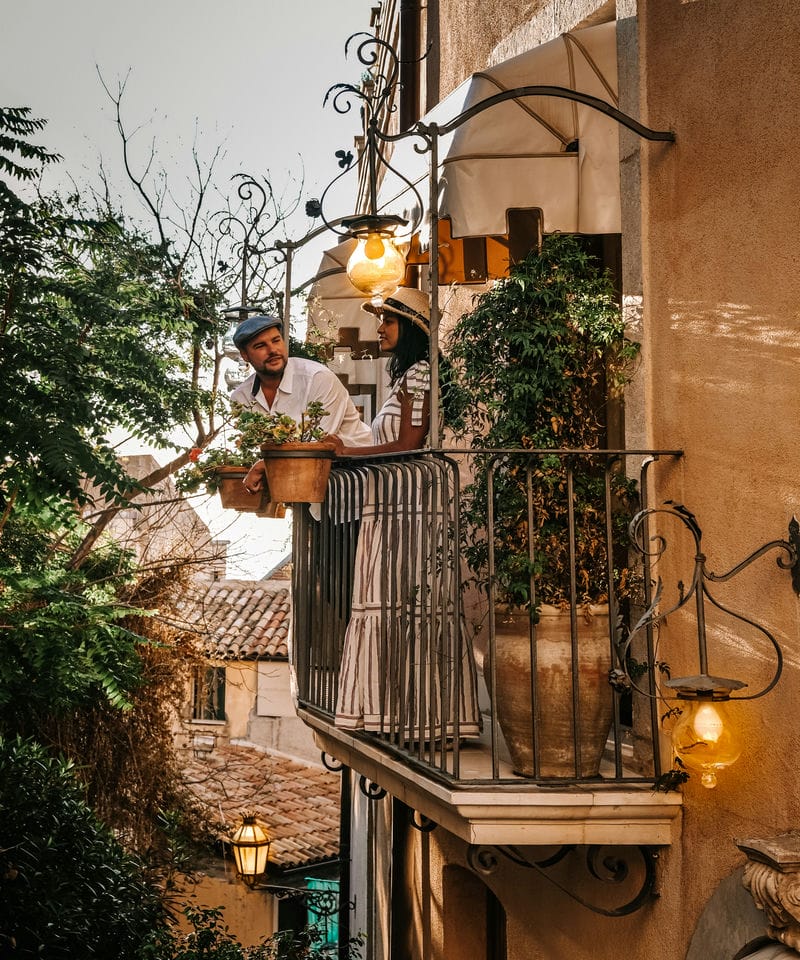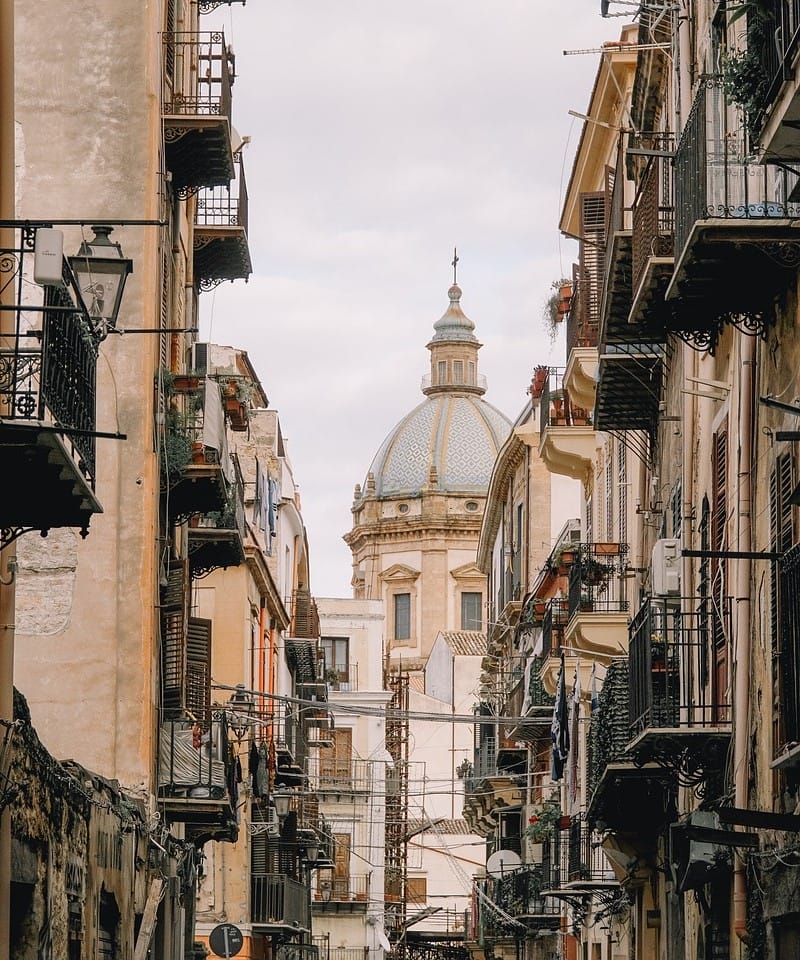
Guide to Italian Street Food: Authentic Flavors and Must-Try Dishes
Key Takeaways
- Italian street food offers quick, classic flavors from regions across Italy.
- Local specialties like arancini, panzerotti, and pizza al taglio highlight regional variety.
- Italian street food uses fresh, simple ingredients and is easy to eat on the go.
- Enjoying Italian street food connects people to local culture and history.
Introduction to Italian Cuisine

Italian cuisine is a rich and diverse reflection of the country’s history, culture, and geography.
With its emphasis on fresh ingredients, bold flavors, and traditional techniques, Italian food has become a staple of international cuisine.
At the heart of Italian cuisine is the concept of piada, Italian street food, which celebrates the simplicity and flavor of traditional Italian dishes like carbonara, penne parm piadas and lemon kale Caesar salad.
The is characterized by many variations of traditional dishes
The use of fresh ingredients and cold cuts is a hallmark of the Italian culinary landscape, and dishes like panino con la porchetta and spicy sausage pepper meatballs marinara showcase the country’s love for bold flavors and hearty portions.
Italian cuisine is also known for its fried delights, such as supplì and arancini, which are often filled with caciocavallo cheese and other savory ingredients.
The country’s street food scene is thriving, with popular dishes like piadina romagnola and tigelle offering a taste of authentic Italian cuisine.
Whether you’re in the mood for a crispy piada pocket, hearty pasta bowls, and chopped salads, Italian cuisine has something to offer everyone.
With its emphasis on believing in eating well and the need to eat fast, Italian cuisine is the perfect choice for foodies and busy travelers alike.
History And Evolution Of Italian Street Food

Italian signature street foods have a long history that reaches back to ancient times.
In the city of Pompeii around 79 AD, people bought food from outdoor stalls.
These early food stands served centuries-old family recipes to citizens in busy towns like Rome and Naples.
In ancient Rome, bread with cheese or dried meat was a common street meal.
People chose these foods because they were easy to carry and quick to eat during a busy day.
As cities grew during the Middle Ages, street food became more popular.
Markets became important spots where vendors sold simple foods such as focaccia, roasted chestnuts, and deep-fried fish from the Adriatic Sea.
These markets inspired trucks and corner markets that served traditional family recipes, emphasizing the authenticity and charm of these eateries.
By the 16th century, panini appeared in Italian cookbooks.
Workers and travelers enjoyed these sandwiches because they were easy to eat on the go.
In the 1970s, Milan’s busy office workers made panini even more common.
Street food adapted to serve people in a rush, offering fast meals in Italy’s urban centers.
Recently, Italian street food has changed again.
The economic crisis of the 2000s led many people to open street food businesses.
Today, classics like arancini (rice balls), supplì, and pizza by the slice, often stuffed with Italian cheeses, fill cities across Italy.
Most Popular Italian Street Foods - Over 8 Italian Handheld Classics

Italy has a long tradition of street food, offering a wide variety of easy-to-eat dishes that reflect the country’s diverse regions.
Locals and visitors enjoy these foods, tasting authentic Italian flavors on the go.
Pizza al Taglio
'Pizza by the cut' is served in square slices, baked in large trays. The thick, airy crust is topped with options like margherita, prosciutto, or even fried chicken. Sold by weight and loved for its convenience in Rome.
Arancini
Sicilian fried rice balls with a crispy crust and creamy center. Filled with ragù, peas, and cheese, or alternatives like spinach or ham. A perfect hand-held snack, popular at festivals.
Porchetta Sandwich with Cured Meats
Roman sandwich of herb-stuffed roasted pork in a crusty roll. Juicy meat with crispy skin makes it rich and flavorful. Common at markets and food stalls.
Panzerotti
Fried turnovers from Puglia, like mini calzones with lighter dough. Classic filling is mozzarella and tomato, with variations. Crispy outside, gooey inside, and great on the go.
Supplì
Roman rice croquettes filled with melted mozzarella. Made with rice, tomato sauce, and sometimes meat. Crispy outside, cheesy inside — a pizza shop staple.
Focaccia & Focaccia di Recco
Soft, chewy flatbread topped with olive oil, herbs, or veggies. The Ligurian version is thin and filled with melted cheese. Eaten plain or in sandwiches, popular across Italy.
Lampredotto
Florentine sandwich made with slow-cooked cow stomach, served in a bun with green sauce. Bread is often dipped in broth. A local favorite for its rich, tender taste.
Panelle
Crispy chickpea fritters from Palermo, usually in a roll with lemon juice. Naturally vegan and gluten-free, they’re cheap, filling, and flavorful street snacks.
Gelato
Italy’s signature frozen dessert, smoother and denser than ice cream. Available in classic and regional flavors, served in cones or cups. A year-round street treat, especially in summer.
Other Notable Italian Street Foods
Italy’s street food scene includes more regional favorites.
Piada (Piadina) is a thin, oval flatbread from Emilia-Romagna. The authentic Italian piada dough is then filled with cured meats, cheese, or fresh greens.
Trapizzino is a triangular pocket of pizza dough stuffed with stews or classic Italian fillings, popular in Rome.
Fritto Misto consists of assorted fried seafood and vegetables, served in paper cones.
Rustico from Apulia combines puff pastry, mozzarella, and tomato sauce.
Arrosticini are skewers of grilled, crispy, or hot lamb from Abruzzo, cooked over charcoal for a smoky flavor.
These foods, although less known outside Italy, have a strong presence at festivals, markets, and food trucks.
They show the full range of Italian street eating.
Regional Varieties Of Italian Street Food

Italian street food changes a lot from region to region.
Each part of Italy has its own favorite snacks, often tied to local traditions and ingredients from corner markets that serve traditional family recipes.
In the north, people enjoy tramezzino (a soft white bread sandwich with various fillings) and piadine (thin flatbreads, usually stuffed with meats, cheese, or vegetables).
Turin is also known for fried snacks and small pastries. The aromas of fresh basil and cured meats are a common feature in these markets.
In central Italy, especially Tuscany, locals eat lampredotto, a sandwich made from slow-cooked cow stomach.
Schiacciata is another favorite—a salty bread topped with olive oil and sometimes filled with cold cuts.
The south offers more fried choices.
In Naples, people enjoy cuoppo—a cone filled with fried treats like arancini (rice balls), potato croquettes, and battered vegetables.
Sicily is famous for its arancini and panelle (fried chickpea flour patties).
Every region reflects its heritage through these foods.
Local ingredients and recipes create a wide variety of simple, quick, and tasty snacks enjoyed by many.
How To Experience Italian Street Food

The best way to discover Italian street food is by visiting local markets and food stalls.
Travelers should look for small vendors in busy piazzas, especially during festivals or fairs. A trip to Rimini, Italy, can provide a memorable experience with its food trucks and corner markets that serve traditional family recipes.
Trying local dishes is important.
In Palermo, people taste arancini (fried rice balls).
In Naples, many enjoy pizza al taglio—pizza sold by the slice.
Florence is known for lampredotto, a traditional sandwich made from cow’s stomach.
A simple way to start is by following a list like this:
- Find a local market or food fair
- Try something unfamiliar
- Ask the vendor for recommendations
- Eat standing up, like the locals do
- Look for seasonal or festival specials
For those traveling in different parts of Italy, a quick reference table helps:
|
City |
Street Food Favorite |
|---|---|
|
Rome |
Supplì (fried rice balls) |
|
Naples |
Pizza al taglio |
|
Palermo |
Arancini, Panelle |
|
Florence |
Lampredotto sandwich |
|
Venice |
Cicchetti (small snacks) |
Timing is helpful, too.
Many foods are best in the morning or late afternoon when vendors are busiest.
Exploring street food is also a chance to interact with locals and learn about their traditions, as vendors often share stories or tips while preparing food.
Italian street food is affordable and gives a taste of real life in each region. It is a great way to explore new flavors without needing a fancy restaurant.
Health And Nutrition In Italian Street Food

Italian street food can be healthy if people choose fresh ingredients and balanced meals.
Many vendors offer options like salads with lots of fresh vegetables, which provide fiber and vitamins; be sure to opt for a housemade Caesar dressing order to enhance your salad.
What's more, these dishes featuring a fresh squeeze of lemon can enhance the flavor of these bowls and chopped salads.
Grilled chicken is another common choice, where the chef crafts your meal to order.
It gives a good amount of protein without too much fat, especially when cooked without heavy sauces or breading.
Some Italian street foods include bread, cheese, or fried items, which can increase calories and fat.
Choosing dishes with more vegetables and lean meats helps keep the meal lighter.
Many Italian street food places also offer bowls with grains, greens, and proteins.
These can be filling and give steady energy without too many extra calories.
It’s important to watch out for added dressings, oils, and cheese if someone wants to keep their meal lower in fat and sodium.
People with certain dietary needs, like gluten-free or vegan, can often find suitable options as well.
Cultural Impact And Modern Trends

Italian street food reflects the everyday life of its cities.
In places like Rome and Naples, people have bought food from street vendors for centuries.
This tradition began as a way to serve quick, affordable meals to busy workers and travelers.
Street food in Italy shows the variety found between regions.
For example, raw seafood is popular in Puglia, while fried dough is common in Naples.
These foods often use local ingredients and recipes handed down through generations.
Modern trends have brought new changes to this food scene.
Food trucks and pop-up stands now appear in many Italian cities.
Young chefs put new twists on traditional recipes, like using healthier oils or adding global flavors. They have created three new craveable handheld items, including the new craveable handheld piada pockets.
Many people enjoy Italian street food not just as a quick meal but as a cultural experience.
Events and festivals now celebrate these foods, bringing locals and tourists together.
Social media has helped spread the popularity of regional street foods across Italy and beyond.
High demand encourages many bakeries and small shops to add street food to their menus.
This keeps old food traditions alive while allowing for new ideas.
Final Thoughts

Italian street food offers a direct way to explore Italy’s food culture.
Each dish reflects different regions and traditions.
Street food grows from daily life and local needs, making it easy for everyone to access and enjoy during their busy day.
Trying street food gives visitors a chance to taste real flavors at an affordable price. Vendors often use fresh, local ingredients for these quick bites, bringing the best flavors to life.
Eating street food helps travelers connect with local people.
Exploring Italian street food helps travelers understand Italy’s rich history and lifestyle. It offers a simple, tasty, and memorable experience!













